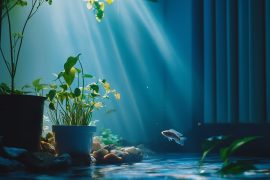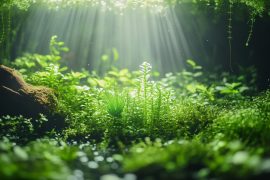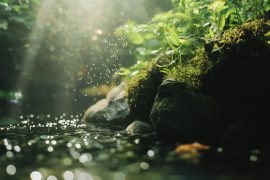In a panic, I scrubbed it with hydrogen peroxide while the clock ticked down, ultimately placing it anyway. The judges were kind enough not to mention it in their critique, focusing instead on my “interesting plant choices” (code for “what were you thinking?”). I slunk home with my participation certificate, convinced my competition days were over before they’d properly begun.

Fast forward eight years, and I’ve now participated in fourteen competitions, judged six, and even helped organize two regional events. That fungal disaster taught me more than a dozen successes could have. Competitions, I’ve learned, aren’t just about winning shiny trophies or impressing peers—they’re pressure cookers that force innovation, build community, and push this niche art form into new territory.
The competitive aquascaping scene has transformed dramatically since I first dipped my toes in these waters. What began as small gatherings of hobbyists sharing tanks in local fish store back rooms has evolved into professional events with corporate sponsorship, live streaming, and cash prizes substantial enough to justify the obsessive attention competitors give their entries. The International Aquatic Plants Layout Contest (IAPLC), once known primarily among serious planted tank enthusiasts, now receives thousands of entries from over 80 countries.
The intensity of preparation for major competitions still catches uninitiated observers by surprise. My entry for last year’s Aquatic Gardeners Association showcase took three months of preparation—researching plant growth patterns, testing hardscape arrangements in mock-ups, growing out specimens to peak condition, and endlessly refining the concept. The actual setup took 16 hours straight, followed by a month of daily adjustments before the final photography session.
Most non-aquascapers are shocked to learn that competition tanks are rarely sustainable long-term displays but rather meticulously staged moments captured at the peak of perfection. Behind the scenes of these competitions, there’s a fascinating social ecosystem. My first major event introduced me to an underground network of aquascapers trading rare plants from plastic bags in hotel hallways, exchanging specialized tools not available commercially, and sharing closely-guarded techniques after hours.
During one late-night critique session in someone’s hotel room, I watched two previous champions completely disassemble and rebuild a newcomer’s concept tank, transforming it from amateur to competition-worthy through subtle adjustments while explaining every decision in exhaustive detail. The judging process varies wildly between competitions, leading to interesting strategic considerations for serious competitors. The IAPLC uses a blind judging system where international judges evaluate photographs without knowing the creators, focusing primarily on composition, creativity, and the overall impression.
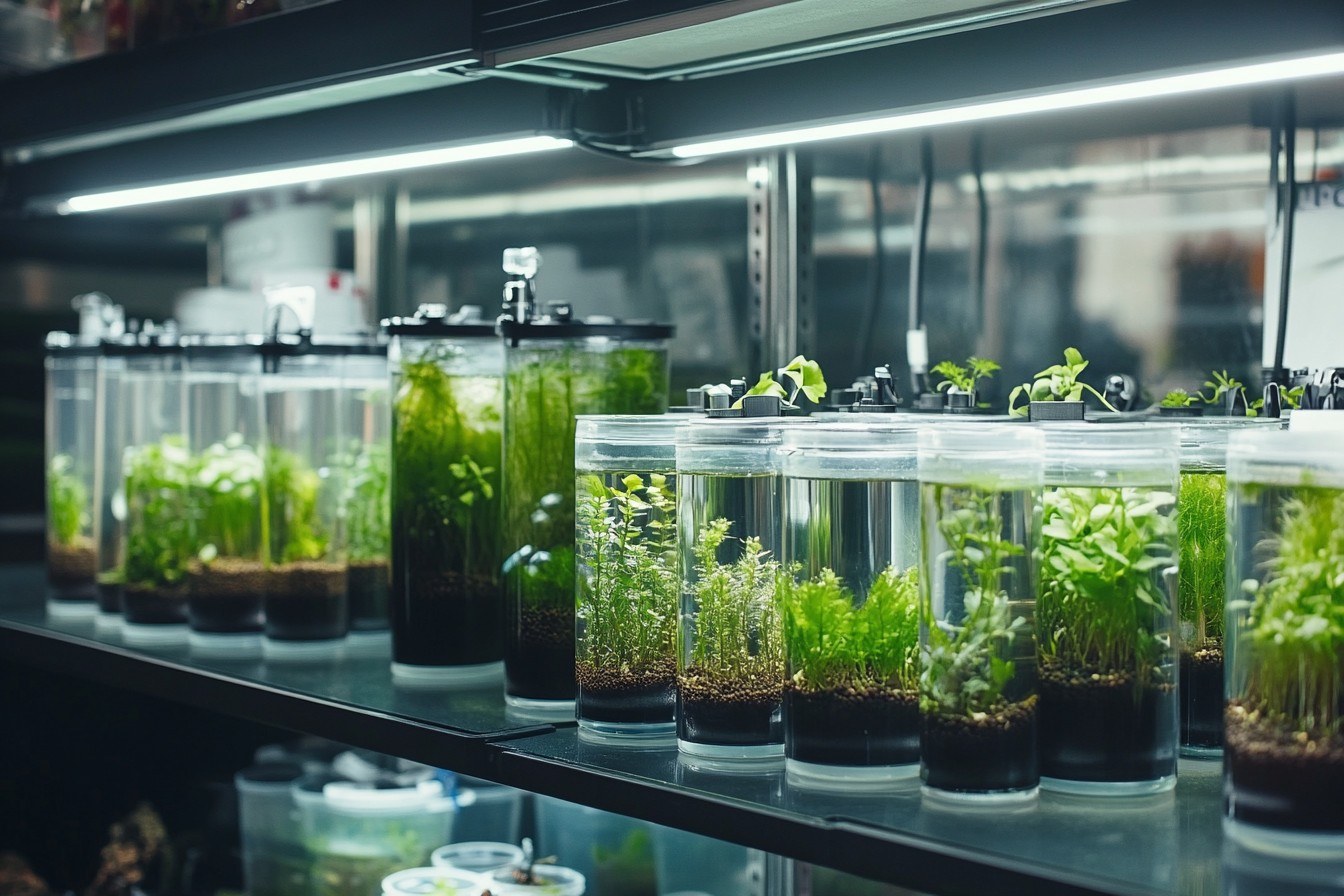
In contrast, the Aquatic Experience competitions I’ve judged involve live tanks where technical execution, water clarity, and plant health carry significant weight. Smart competitors tailor their entries to the specific criteria of each contest, sometimes creating entirely different styles for different events. My most humbling competition experience came during an exhibition event where contestants were given identical tanks, equipment, and material selections, then allowed just four hours to create a complete layout.
Some participants produced incredible miniature landscapes that told entire stories, while I struggled with basic balance and composition under pressure. It taught me that true mastery isn’t about having the most expensive materials or longest setup time—it’s about fundamental design understanding that translates across any constraints. The competitive circuit has its share of drama and controversy too.
I’ve witnessed heated debates over “borrowed” design concepts, accusations about digitally enhanced competition photographs, and whispered speculation about tanks that wouldn’t survive a week past the submission deadline. During one particularly tense judging session, two respected aquascapers nearly came to blows over whether a certain style of minimalist hardscape layout still qualified as aquascaping if the plant mass constituted less than 15% of the visible composition. What fascinates me about these competitions is how they’ve evolved their own distinct aesthetic categories, each with passionate adherents who sometimes view other approaches with barely concealed disdain.
The Nature Aquarium style, pioneered by Takashi Amano, emphasizes natural landscapes with balanced compositions following principles adapted from Japanese gardening. Dutch-style aquascapes feature meticulously organized plant streets with contrasting colors and textures, prioritizing horticultural excellence over naturalistic appearance. Biotope competitions require scientific accuracy, recreating specific natural habitats with geographically appropriate hardscape, flora, and fauna.
I once entered what I thought was a beautiful Nature Aquarium-inspired layout into a competition that was, unknown to me, heavily biased toward Dutch-style aquascaping. The judges’ comments were polite but clear—my “unfocused plant collection lacked the necessary structure and organization.” It was like bringing an impressionist painting to a photorealism competition. Now I carefully research the judges’ backgrounds and previous winners before deciding which events match my strengths.
The competitive world has its own distinctive language that would sound like nonsense to outsiders. I’ve sat in evaluation sessions where serious discussions revolved around whether a tank had achieved proper “sense of wabi” or if the “transitional midground created sufficient tension against the focal seiryu arrangement.” The first time I heard a senior judge dismiss an entry for having “insufficient volumetric expression despite good texturalization,” I nodded sagely while making a mental note to Google those terms later. Live aquascaping competitions have emerged as the most audience-friendly format, turning what was once a solitary, private creative process into a spectator sport.
These events—where competitors create complete layouts in a matter of hours while spectators watch—combine the tension of cooking shows with the creative expression of art competitions. I participated in one where the audience could vote on which materials each competitor received at the halfway point, adding an improvisational element that tested adaptability as much as design skill. My favorite competition memory involves a spectacular failure that transformed into an unexpected triumph.
During a demonstration competition, my CO2 regulator malfunctioned spectacularly, sending a foggy cloud through my nearly-completed tank just as judging was about to begin. Rather than panic, I decided to lean into the disaster, quickly adjusting the hardscape to suggest a misty mountain scene emerging from clouds. That improvised “foggy mountain” layout ended up winning the audience choice award, teaching me that adaptability sometimes trumps perfect execution.
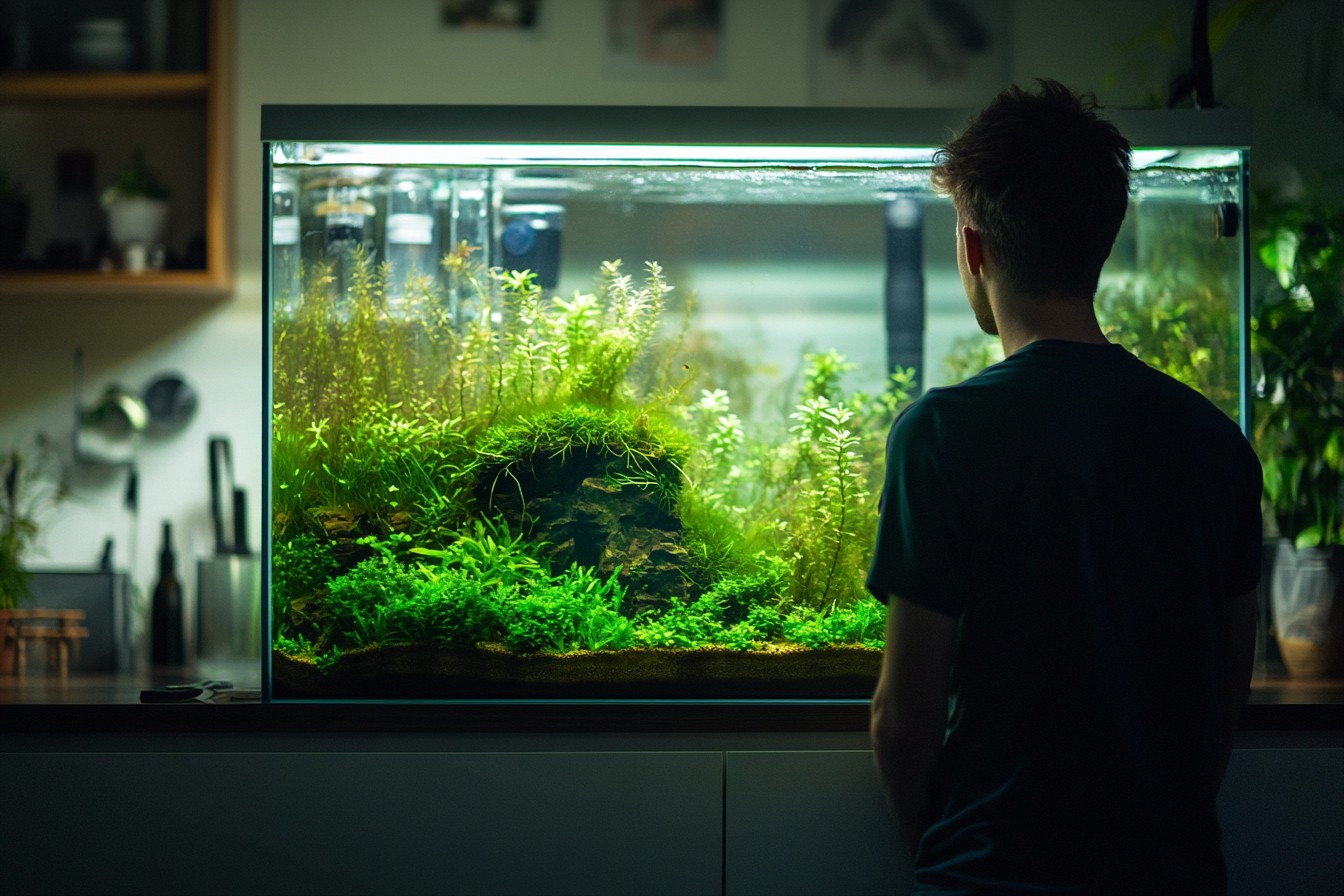
The physical and mental demands of serious competition are rarely discussed publicly. During a major event in Singapore, I watched a competitor faint from exhaustion after standing in tank-water for nine straight hours without breaks, so focused on perfecting his layout that he forgot basic self-care. At another event, a well-known aquascaper suffered a minor breakdown when his carefully collected rare plants arrived brown and melting, forcing a complete concept change hours before the deadline.
The pressure can be intense, particularly as prize values and sponsorship opportunities have increased. Speaking of sponsorship, the economics of competitive aquascaping have evolved dramatically. Early competitions offered little beyond bragging rights and perhaps a modest store credit prize.
Today’s top events feature equipment packages worth thousands, cash prizes, and perhaps most valuably, industry recognition that can launch design careers, YouTube channels, and consulting businesses. I’ve watched talented unknowns transform into minor celebrities within the aquascaping world after a single high-profile win, suddenly fielding offers for international demonstrations and signature product lines. For all the intensity and occasional drama, what keeps me coming back to the competition circuit is the community.
During my second IAPLC submission preparation, my custom-ordered specialty wood arrived badly damaged. After posting about my predicament on a competition forum, three previous competitors whom I’d never met in person arranged to courier pieces from their personal collections to me, asking nothing in return except photos of the finished layout. That spirit of collaborative competition, where pushing the art form forward matters more than individual victories, remains the heart of these events.
The global nature of modern aquascaping competitions has led to fascinating cross-cultural exchanges. I’ve watched Brazilian aquascapers incorporate their country’s vibrant design sensibilities into traditional Japanese-inspired layouts, creating revolutionary hybrids. Eastern European competitors often bring distinctive minimalist approaches influenced by their architectural traditions.
Competitions become melting pots where these diverse influences create entirely new substyles that would never have emerged in isolation. For anyone considering entering their first aquascaping competition, I offer this hard-won advice: forget about winning your first time out. View it instead as expensive education and community building.
Take extensive notes during critiques, photograph everything, and study what worked in the winning entries. Most importantly, introduce yourself to everyone, especially the competitors whose work you admire. This community, for all its occasional competitive intensity, remains remarkably generous with knowledge and support for passionate newcomers.
The future of competitive aquascaping looks incredibly bright, with technology expanding creative possibilities. Recent competitions have featured integrated projection mapping, programmable LED systems that simulate weather patterns, and even experimental holographic elements. Yet despite these innovations, the fundamental challenge remains unchanged from when I placed that fungus-covered driftwood in my first competition tank: creating a momentary underwater world compelling enough to stop viewers in their tracks and transport them, if only briefly, into a miniature landscape of wonder.

